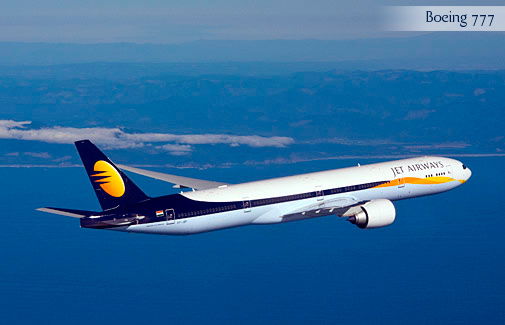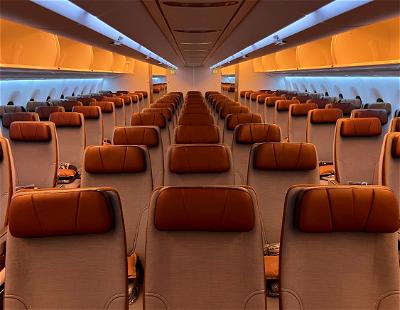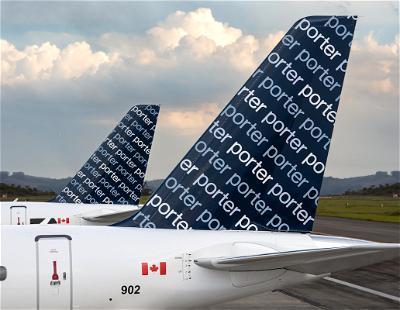There has been a story circulating about a Jet Airways 777-300ER flight from Mumbai to Brussels which dropped 5,000 feet over Turkey airspace. I’ve seen some reports suggesting the plane “dived” or “plummeted,” but I see nothing suggesting that was the case. It is an interesting story, though.

Via The Times Of India:
A Jet Airways aircraft winging its way from Mumbai to Brussels last Friday suddenly dropped 5,000 feet in the Ankara airspace over Turkey. The commander of the Boeing 777 aircraft was taking ‘controlled rest’, which means a nap as per rules. The aviation regulator is now probing if the co-pilot too had dozed off.
The co-pilot, who was supposed to hold fort in the cockpit, claims she was busy on her tablet and did not notice that the aircraft had lost altitude. It took a call from an alarmed Ankara ATC, asking why 9W-228 had moved away from its assigned flight level of 34,000 feet, for the situation to be rectified.
…
“The commander was taking controlled rest, which means he was sleeping as per global airline norms where pilots take rest in the cockpit by turn on long flights. The co-pilot, who was supposed to ensure that the aircraft flew steadily on its assigned path, told DGCA investigators that she was on her electronic flight bag (EFB) — a tablet that has all aircraft documents loaded on to it. She did not realize that the aircraft had dropped below its assigned level,” said a source who spoke to the two pilots.
Interesting stuff, which raises a few questions:
- Did the autopilot stop working, or how did the plane change altitude?
- Was the first officer sleeping as well, or how did she not realize the plane dropped 5,000 feet? Over how long of a period did the descent occur? It sounds like it was a gradual descent based on how long it took them to respond.
- Clearly it seems to be a thing, but I wasn’t familiar with “controlled rest.” Most airlines I’ve flown have relief pilots, so that there are always (at least in theory) two pilots awake in the cockpit. It seems this flight had two pilots, and controlled rest consisted of just one pilot being awake.
Still not nearly as exciting as the story last year about the two Air India pilots that tricked the flight attendants to stay in the cockpit while they went to business class to nap.
Via The Telegraph:
An Air India pilot has been suspended following claims that he and his co-pilot put more than 160 passengers at risk by leaving two female cabin attendants in charge of their airliner while they slept in business class seats.
They were only forced to return 40 minutes later when the attendants accidentally switched off the plane’s auto-pilot switch, according to the claims.
Anyway, fortunately everything ended well, though it does raise a lot of questions as to what was going on.





Never would I fly an Indian carriers even for FREE. My life is worth more than a free ticket even if it's first class. It is like first class to death!
@Mike @Sean M: I was also shocked to learn that controlled rest is the norm rather than the exception. Seems a bit crazy, but I suppose I would rather have one well-rested pilot than two exhausted pilots.
Yes, I was thinking about the outcome of that NWA investigation. Were the results of that ever released? I had heard some discussion from NWA employees who had flown with that team, but I have never heard anything definitive.
Love the xenophobic comments from the likes of Marcus. As if it couldn't happen on a US airline. Oh wait, remember the NWA flight that overshot its destination by hundreds of miles because the crew were doing god knows what on the flight deck?
@Mike
Your assertions regarding "controlled rest" being a DGCA invention are inaccurate. "Controlled rest" is a JAR/EASA invention that has been adopted by most major CAAs in the world now (the US FAA being a notable exception). Suggest you refer to ICAO document 9966, UK CAA CAP 371, UK CAA Paper 2003/8, Transport Canada Standard 720.23 and plenty of other equivalents for a full and detailed study of the regulations and principles surrounding this. "Controlled...
@Mike
Your assertions regarding "controlled rest" being a DGCA invention are inaccurate. "Controlled rest" is a JAR/EASA invention that has been adopted by most major CAAs in the world now (the US FAA being a notable exception). Suggest you refer to ICAO document 9966, UK CAA CAP 371, UK CAA Paper 2003/8, Transport Canada Standard 720.23 and plenty of other equivalents for a full and detailed study of the regulations and principles surrounding this. "Controlled rest" is used every single day by pilots on board airlines such as Air Canada, British Airways and Cathay Pacific. "Controlled rest" in accordance with specified standards is not the problem here.
It seems that controlled rest is a uniquely Indian invention, created by the county's Directorate General of Civil Aviation.
I spend a lot of time in cockpit jump seats for work, and the airlines I fly with require both pilots to be awake and operational. On longer flights with 3+ crew they plan their nap shifts so that there is always a senior pilot (captain or FO) along with a second officer at the controls.
...It seems that controlled rest is a uniquely Indian invention, created by the county's Directorate General of Civil Aviation.
I spend a lot of time in cockpit jump seats for work, and the airlines I fly with require both pilots to be awake and operational. On longer flights with 3+ crew they plan their nap shifts so that there is always a senior pilot (captain or FO) along with a second officer at the controls.
As was reported after the MH370 disaster, the 777 has a built-in (extremely loud) alarm that rings if the flight systems detect a lack of input from the pilots. If they don't scroll, click or enter anything for (I believe) 20 minutes the system assumes they have fallen asleep and will ring the alarm. If that happens the airline's flight control center is also informed via ACARS.
We know very little at this point, but here's my two cents nonetheless.
At that point during the flight, hours into cruise level with the pilot leisurely checking her EFB (and not hands on, e.g. to avoid weather systems or program the approach), the plane should be in the VNAV autopilot mode. This mode allows the plane to follow the altitude set in the Flight Management Computer, confirmed with manually dialing in that altitude on the MCP. If there is a discrepancy between the two altitudes the plane should remain in level flight and not be descending.
To have the plane climb/descend to the MCP altitude (and not the FMC altitude), the pilot would have to manually push the autopilot to do so. For you flight geeks that's either through the V/S knob, FLCH button or ALT INT function. Doing so would set off a number of different aural and visual indicators, which a trained pilot should instinctively respond to/notice. As mentioned by John, the autopilot disengage function emits a very loud warning, which the copilot would not have missed.
But the most disconcerting fact is that she did not even *feel* the plane descend. If the descent was very gradual that 'sinking feeling' may not have been felt, but she should have seen the engines de-throttle (moving throttles and changing N1 numbers on the EICAS) as the autopilot reduced thrust to maintain a safe (and pre-programmed) cruise speed in descent.
From a a technical standpoint, one explanation for the odd autopilot behavior could be dirty pitot tubes. Often bird strikes go unnoticed and the remains of the bird fill the tubes. At cruise altitude the gunk freezes and impacts the instruments. Again, the pilots should have noticed any discrepancies.
That's why you always need two sets of (open) eyes in the cockpit. Even in one of the safest and most automated aircraft in the sky, shit can go south quickly.
@ Mike -- Very interesting stuff, thanks!
Still interested in flying Air India or any other Induan airline?!
Similar things happen more often than people realise, all over the world. It's only news when the Indian press find out about it though.
"The co-pilot was busy on her tablet...." Trying to beat that level on Angry Birds?
It makes a noise if you accidentally disengage the autopilot.
http://youtu.be/8XxEFFX586k
So, I'm not sure what could have happened....